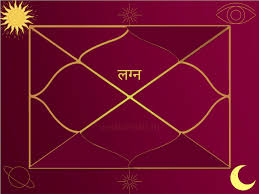Rashi (Zodiac Signs)
In Vedic astrology, the calculation of Rashi degrees is essential for determining the precise position of planets within a zodiac sign. Here’s a detailed explanation:
Rashi Degree Calculation
- Zodiac Division: The zodiac is divided into 12 Rashis (signs), each spanning 30 degrees. The entire zodiac circle is 360 degrees.
- Planetary Position: The position of a planet is measured in degrees, minutes, and seconds within a specific Rashi.
- Nakshatra Connection: Each Rashi is further divided into 2.25 Nakshatras (constellations), and each Nakshatra spans 13 degrees and 20 minutes.
- Degrees in a Rashi: The degree of a planet within a Rashi determines its exact placement and influences. For example:
- If a planet is at 15° in Mesha (Aries), it is in the middle of the Rashi.
- If it is at 29° in Mesha, it is near the end of the Rashi.
- Calculation Method:
- The planetary position is calculated based on the sidereal zodiac in Vedic astrology.
- The Lahiri Ayanamsa is commonly used to adjust for the precession of the equinoxes.
- The degrees are derived using the ephemeris or astrological software.
Importance of Rashi Degrees
- Strength of Planets: The degree determines whether a planet is in its exaltation, debilitation, or neutral state.
- Bhava (House) Placement: The degree helps in pinpointing the exact house a planet occupies in the Kundali (birth chart).
- Aspects and Conjunctions: The degree is crucial for analyzing planetary aspects and conjunctions.
In Vedic astrology, the 12 Rashi signs (zodiac signs) represent the Moon’s position at the time of birth. Each Rashi is associated with specific characteristics, ruling planets, and elements. Here’s a detailed explanation along with a table for better clarity:
Characteristics of Rashi Signs
- Mesha (Aries): Ruled by Mars, symbolizes energy, courage, and leadership. Known for being ambitious but sometimes impulsive.
- Vrishabha (Taurus): Ruled by Venus, represents stability, patience, and love for material comforts. Can be stubborn.
- Mithuna (Gemini): Ruled by Mercury, signifies communication, intellect, and adaptability. Curious but may lack focus.
- Karka (Cancer): Ruled by the Moon, embodies emotions, nurturing, and intuition. Sensitive and imaginative.
- Simha (Leo): Ruled by the Sun, symbolizes vitality, self-expression, and leadership. Confident but may seek attention.
- Kanya (Virgo): Ruled by Mercury, represents meticulousness, service, and practicality. Analytical but can be overly critical.
- Tula (Libra): Ruled by Venus, stands for harmony, balance, and aesthetics. Diplomatic but indecisive.
- Vrishchika (Scorpio): Ruled by Mars, signifies transformation, intensity, and passion. Determined but secretive.
- Dhanu (Sagittarius): Ruled by Jupiter, represents wisdom, exploration, and optimism. Philosophical but may lack tact.
- Makara (Capricorn): Ruled by Saturn, embodies discipline, responsibility, and ambition. Hardworking but reserved.
- Kumbha (Aquarius): Ruled by Saturn, symbolizes innovation, social vision, and independence. Progressive but detached.
- Meena (Pisces): Ruled by Jupiter, signifies compassion, spirituality, and creativity. Dreamy but can be escapist.
Tabular Representation of Rashi Signs
| Rashi (Sanskrit) | English Name | Ruling Planet | Element | Key Traits |
|---|---|---|---|---|
| Mesha | Aries | Mars | Fire | Courage, leadership, ambition |
| Vrishabha | Taurus | Venus | Earth | Stability, patience, comfort |
| Mithuna | Gemini | Mercury | Air | Communication, intellect |
| Karka | Cancer | Moon | Water | Emotions, nurturing, intuition |
| Simha | Leo | Sun | Fire | Vitality, confidence, creativity |
| Kanya | Virgo | Mercury | Earth | Meticulousness, service |
| Tula | Libra | Venus | Air | Harmony, balance, aesthetics |
| Vrishchika | Scorpio | Mars | Water | Transformation, intensity |
| Dhanu | Sagittarius | Jupiter | Fire | Wisdom, exploration, optimism |
| Makara | Capricorn | Saturn | Earth | Discipline, responsibility |
| Kumbha | Aquarius | Saturn | Air | Innovation, independence |
| Meena | Pisces | Jupiter | Water | Compassion, spirituality |




